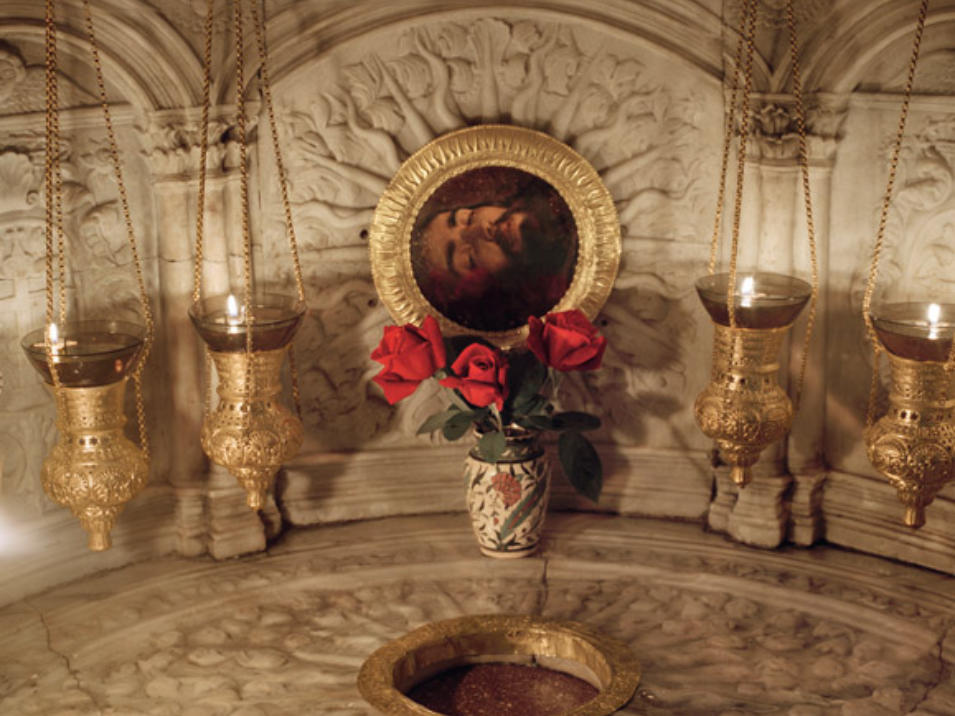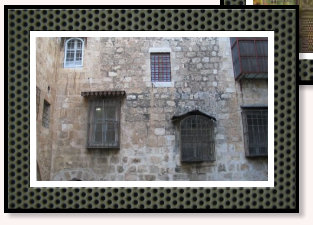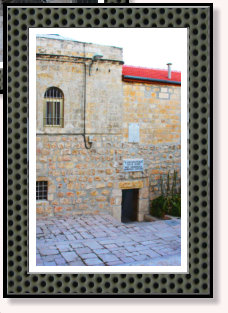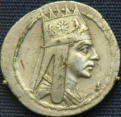

Armenian Jerusalem


2,000 years of glorious history
The church has always dominated the Armenian Jerusalem landscape. Throughout its
troubled history, it has always been the priestly brotherhood that has provided the
Armenians with the impetus and inspiration to forge ahead. Priests invented the Armenian
alphabet, they were in the vanguard of armies on the march, they gave Jerusalem its first
printing press and its first photographic studio, they copied and illustrated manuscripts,
their convent sheltered the battle- scarred flock in the Old City of Jerusalem.
The ranks of the Armenian clergy have traditionally been refurbished by infusions from neighboring countries: Syria and Lebanon before the 1967 six day war, and recently the motherland. No candidates for the priesthood are accepted from the local community. The aspirants are housed in a seminary endowed by American Armenian philanthropist Alex Manougian. Some of them come from distant villages in the mountains of Turkish Armenia, bearing outlandish names that have no connection with their ancestors and hardly knowing a word of Armenian. Some come seeking a refuge and a haven from the endless battles in and around the Middle East, leaving behind friends and families, dreaming of the day they will be invested with the "veghar" (the unique, cone-shaped Armenian churchmen's head-dress) and have the right to call themselves Vartabed (literally, teacher). In preparing young men for the priesthood, the Armenian Patriarchate fulfils an indispensable role in the service of the Armenian church: while some of the priests ordained in Jerusalem remain to serve St James, others are sent overseas to fill vacancies that arise in the ranks of clergy serving diaspora churches which rely primarily on Jerusalem for resupply. The seat of the Armenian Patriarchate in Jerusalem, a member of the troika of "guardians" of the Holy Places along with the Greek Patriarchate and Latin Custodia, is located in the convent of St James, named after the cathedral there. The compound also provides accommodation for pilgrims who come to the Holy City in quest of spiritual rejuvenation and reaffirmation of their faith, transforming Jerusalem into a boundless fount of faith for generations. As I tread the cobble stoned alleys of the Convent, I am taken back more than a thousand years into the distant, idyllic past of my forefathers who laid down the foundation stone of our present existence, for all generations to come. The convent itself occupies the southwestern corner of the Old City and is situated on the site of the encampment of the Xth Legion of Rome which was to storm the Jewish Zealot stronghold at Masada. Together with its adjoining outcrop, the Armenian Quarter, which skirts the northern edge of the Convent, the Armenian compound was once home to over 25,000 people at its peak. When you first enter through the huge iron gate of the convent, you come face to face with an ancient marble water fountain, which was placed there centuries ago to provide a cool, refreshing drink for pilgrims, in compliance with the customs of Middle Eastern hospitability. [The fountain is dry now, the introduction of running water to the homes of Jerusalem residents sometime during the British Mandate, making it redundant]. Behind and above the fountain, a marble plaque embedded in the wall and engraved in flowing Arabic script, proclaims the privileged status of the Armenian Patriarchate, and calls down horrendous curses on the heads of those who would violate these privileges, granted by the Mameluke Sultan Chaqmaq. A few paces away, to the left, is another ancient iron gate that leads to the vestibule of the Cathedral of St James. A magnificent edifice that ranks as one of the most awe-inspiring in all of the Middle East, the Cathedral is bedecked with centuries-old "gantegh"s (oil lamps), dangling from the soaring vault, and tallow candies dotting the three altars. The oil lamps are still in use today, lovingly tended by altar boys who replenish them with pure olive oil at regular intervals. The candles, made by the Patriarchate's own candle-maker, try vainly to dispel the elemental darkness that pervades the church and that impart mystical significance to Armenian church rites. This mystical presence has been graphically expressed by an Armenian poet who speaks thus of the ambience of Armenian churches: "Gay rainbow sunlight [cascading down a high dindow] . . . golden threads entwined in mists of velvet incense . . ." The Cathedral, which has been built on the site of the tombs St James the Lord's brother and St James the Lesser, has in the past also served as a bomb shelter. During the 1948 Arab- Israeli war, the only sanctuary from the daily bombardment of the city that Armenians could find was within the solid, reassuring confines of their Cathedral, with its one-meter thick walls. During one particularly memorable night, over 1,000 shells of all kinds, including the dreaded mortar, landed on and around the Cathedral - but no single casualty did they claim. Many believers would later swear that they had seen a mysterious figure, dressed in white, standing vigil on the roof of the Cathedral, and with his hands warding off the shower of missiles. It was none other than St James, believers assert. At the entrance to the Cathedral, a large plaque marks the site of the grave of Jerusalem's 94th Armenian Patriarch, the late Archbishop Guregh Israelian. One of the city's most popular and charismatic men of the cloth, Israelian died in 1949 of a broken heart, after witnessing the intolerable sufferings of his war-ravaged flock, caught in the crossfire between the Arab and Jewish armies. More than once, he would cradle in his own arms the shrapnel-shredded body of an Armenian who had been the latest casualty in the unrelenting war, his eyes brimming with tears. I remember the day an uncle of my father and another distant relative were blown up by a bomb as they stepped outside the church. Israelian was visibly shaken as he came to share our pain with us. "If you step outside your house and there is a wild dog there, it will bite you," he said to us. "Those bombs are like wild dogs - keep away from them, stay inside," he pleaded. Another lonely, unpretentious grave sits forlornly under an archway a few paces away, at the other end of the vestibule. This one is the last resting place of Jerusalem's first Armenian Patriarch, Abraham, a contemporary of Saladin.
Home | Disclaimer | Access






St James Cathedral
St Archangels church
St James convent




























